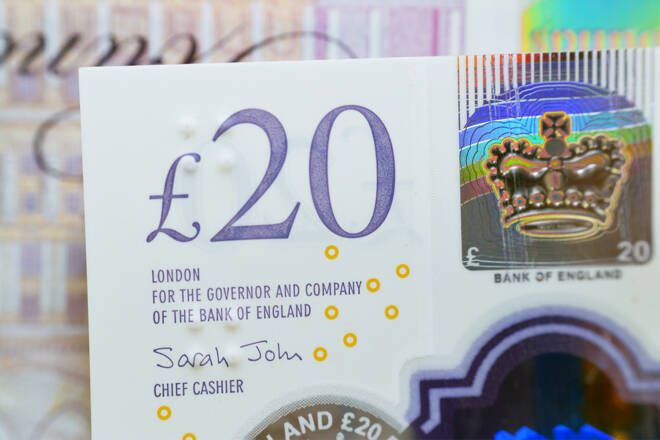Advertisement
Advertisement
GBP to USD Forecasts: Bulls Eye Sub-$1.2350 on Hawkish Fed Bets
By:
It is a quiet day for the GBP to USD, with no UK economic indicators to consider. However, BoE and Fed chatter will move the dial.
It is a quiet day for the GBP/USD. There are no UK economic indicators for investors to consider today. The lack of economic indicators will leave the GBP/USD in the hands of market risk sentiment.
However, investors should consider the latest economic indicators and implications vis-à-vis BoE monetary policy. While wage growth and inflation numbers suggest more BoE monetary policy tightening, the Labour Market Overview showed cracks stemming from the Bank’s moves to bring inflation to target.
On Wednesday, Bank of England Governor Andrew Bailey spoke at the British Chamber of Commerce, noting that, while inflation is too high, the Bank expects inflation to weaken sharply in the coming months. However, Bailey also warned that second-round effects are unlikely to dissipate as quickly, with labor market conditions likely to deteriorate at a weaker pace than previously projected.
With the lack of stats and Bailey’s comments raising concerns over a BoE-fueled recession, Monetary Policy Committee Member Jonathan Haskel is on the calendar to speak today.
GBP to USD Price Action
This morning, the GBP/USD was up 0.01% to $1.24092. A mixed start to the day saw the GBP/USD rise to an early high of $1.24167 before falling to a low of $1.23920.
Technical Indicators
Resistance & Support Levels
| R1 – $ | 1.2470 | S1 – $ | 1.2369 |
| R2 – $ | 1.2532 | S2 – $ | 1.2330 |
| R3 – $ | 1.2633 | S3 – $ | 1.2228 |
The Pound needs to move through the $1.2431 pivot to target the First Major Resistance Level (R1) at $1.2470. A return to $1.2450 would signal an extended breakout session. However, the Pound would need central bank chatter and US debt ceiling-related news to support a breakout session.
In the event of an extended rally, the GBP/USD would likely test the Second Major Resistance Level (R2) at $1.2532. The Third Major Resistance Level sits at $1.2633.
Failure to move through the pivot would leave the First Major Support Level (S1) at $1.2369 in play. However, barring another risk-off-fueled sell-off, the GBP/USD should avoid sub-$1.23. The Second Major Support Level (S2) at $1.2330 should limit the downside. The Third Major Support Level (S3) sits at $1.2228.
Looking at the EMAs and the 4-hourly chart, the EMAs send bearish signals. The GBP/USD sits below the 200-day EMA, currently at $1.24601. The 50-day EMA pulled back from the 100-day EMA, with the 100-day EMA narrowing to the 200-day EMA, delivering bearish signals.
A move through the 200-day EMA ($1.24601) would support a breakout from R1 ($1.2470) to target the 50-day ($1.24982) and 100-day ($1.25045) EMAs and R2 ($1.2532). However, failure to move through the 200-day EMA ($1.24601) would leave S1 ($1.2369) in view. A move through the 50-day EMA would send a bullish signal.
The US Session
Looking ahead to the US session, it is a quiet day on the US economic calendar. There are no US economic indicators for investors to consider. The lack of stats will leave the GBP/USD in the hands of market risk sentiment and, importantly, Fed chatter.
FOMC members Williams and Bowman will set the stage for Fed Chair Powell to wrap up the week. The Fed Chair has caught investors by surprise on numerous occasions. Sticky inflation and very tight labor market conditions could force Powell to discuss the possibility of a June interest rate hike.
Beyond the economic calendar, US debt ceiling-related news will move the dial.
About the Author
Bob Masonauthor
With over 28 years of experience in the financial industry, Bob has worked with various global rating agencies and multinational banks. Currently he is covering currencies, commodities, alternative asset classes and global equities, focusing mostly on European and Asian markets.
Advertisement
